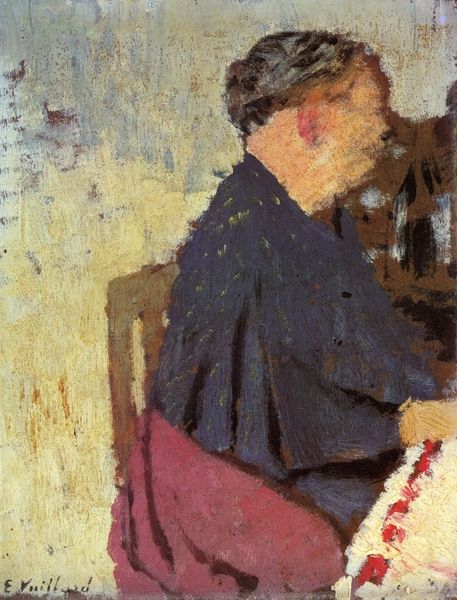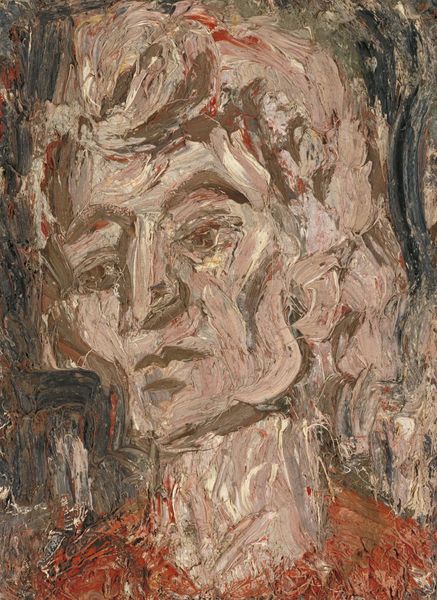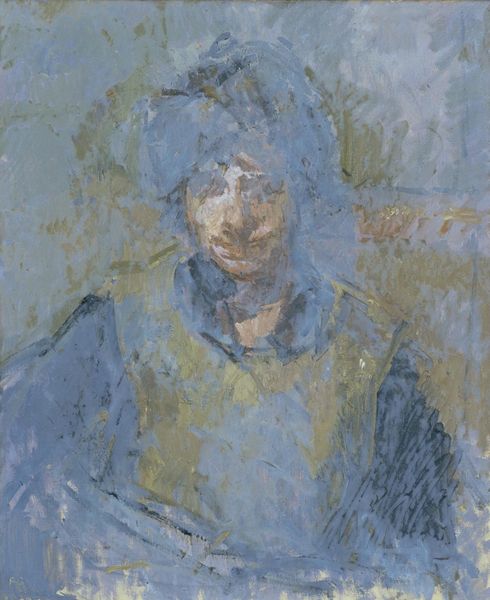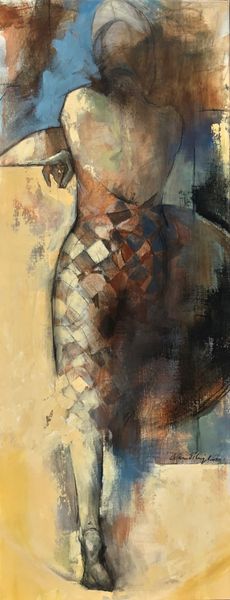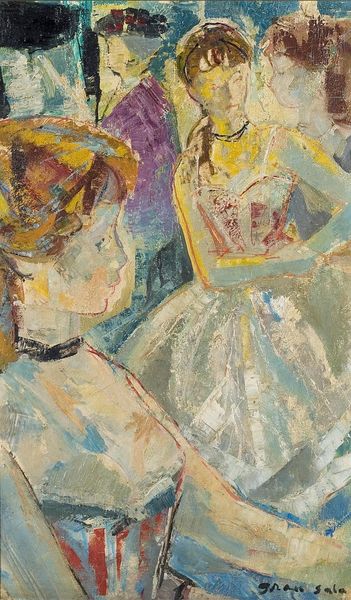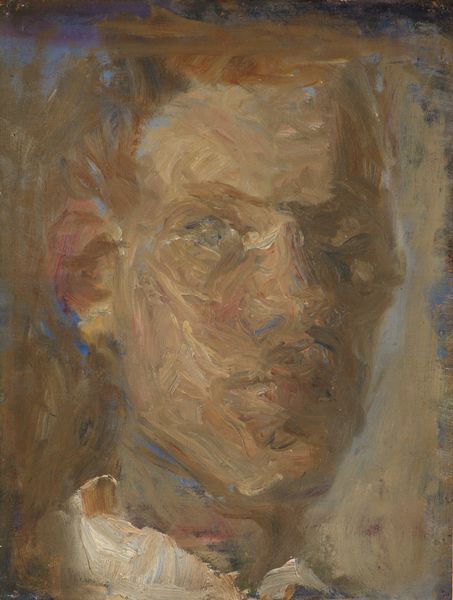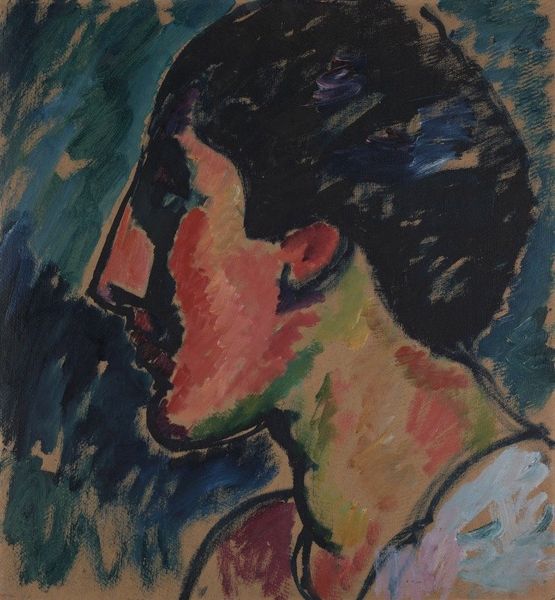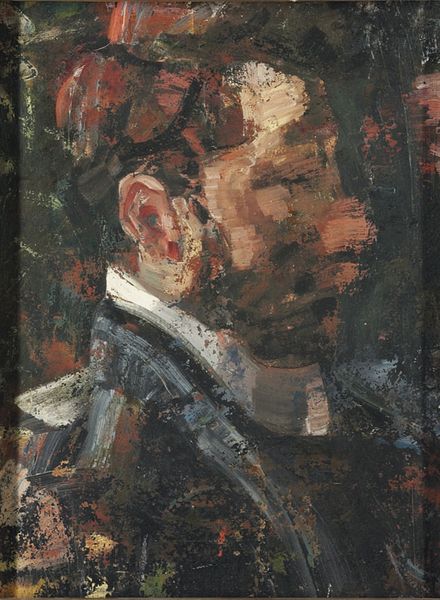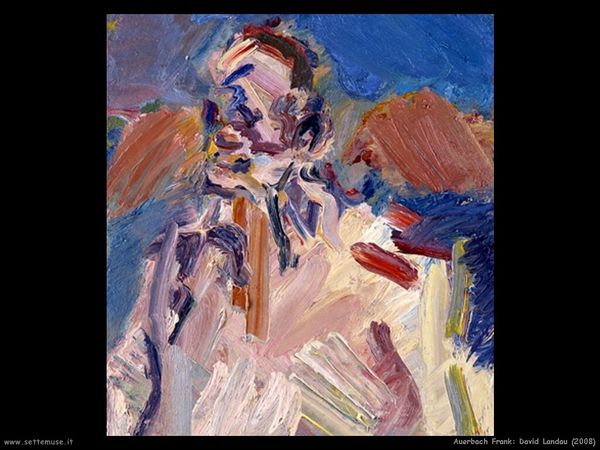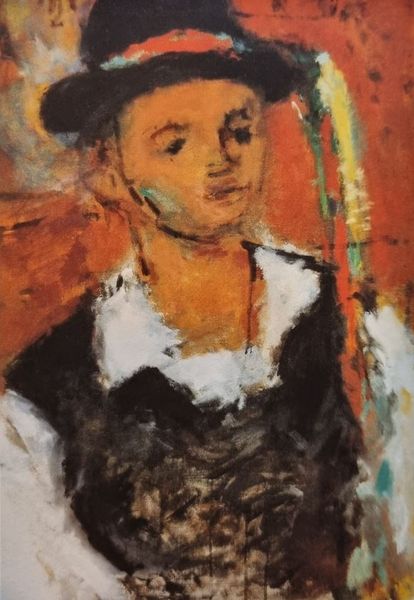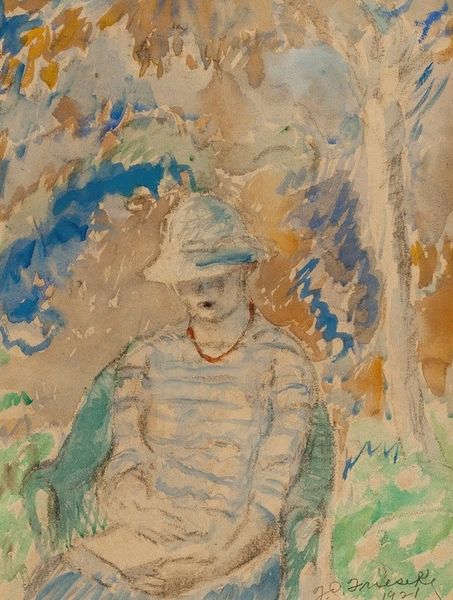
oil-paint
#
portrait
#
oil-paint
#
oil painting
#
expressionism
#
modernism
Dimensions: 73 x 60 cm
Copyright: Public domain
Curator: Looking at Amedeo Modigliani's "Portrait of Frank Haviland Burty" from 1914, made with oil paint, one can’t help but contemplate the portraiture traditions. I’m intrigued by the choices surrounding the sitter and the overall representation of identity here. Editor: The paint handling! The way Modigliani applied these broad strokes – you can see the materiality of the oil itself. It suggests speed, almost a feverish quality to its making. I wonder what was happening in the studio, in his life. Curator: Indeed, the application technique definitely speaks volumes. If we consider the historical backdrop – the burgeoning modernist movements – the portrait almost challenges classical portraiture and its focus on idealized representation. Modigliani was interested in other means to unveil one’s inner world. Editor: But even the inner world is made, right? Modigliani’s materials were certainly limited by social circumstance; economic and material restraints always played a role. But there's an exuberance too, despite, or perhaps because of, that restraint. See the almost sculptural solidity that emerges from the paint? Curator: Definitely. And what do you make of Haviland Burty's lowered gaze? The closed eyes steer us away from direct confrontation and traditional ways in which power dynamics were portraitured through direct eye contact. Instead, we are pushed towards an introspective understanding, or a symbolic contemplation. Perhaps a questioning of social roles at the time? Editor: The simplification of form is essential here, especially within those reductive planes describing Burty’s face. But let’s not lose sight of this also as skillful production. He learned to see and translate into something potent and recognizable out of very modest supplies. This kind of image production has deep social ramifications for how people recognize themselves. Curator: Absolutely, and thinking about these material limitations informs how we understand representation, especially concerning issues around race, class, and even the artist's own identity as a migrant. There is a sense of quiet dignity conferred by this modern aesthetic language. Editor: And that dignity is constructed as much through the subject's stance, as it is by the sheer act of Modigliani grappling with material. Both contribute to an understanding of human presence and, to me, a more holistic awareness of making as thinking. It is powerful, even now.
Comments
No comments
Be the first to comment and join the conversation on the ultimate creative platform.
